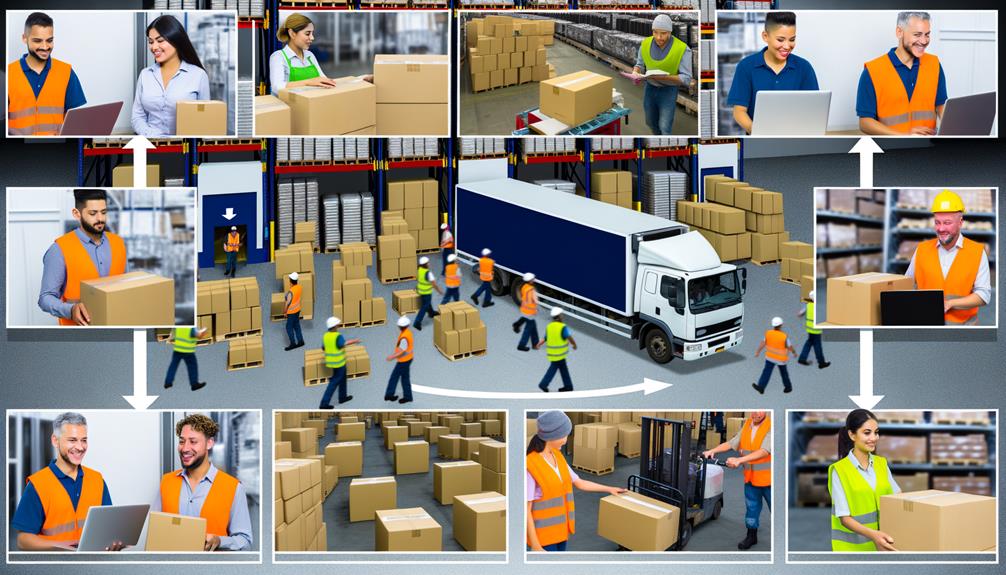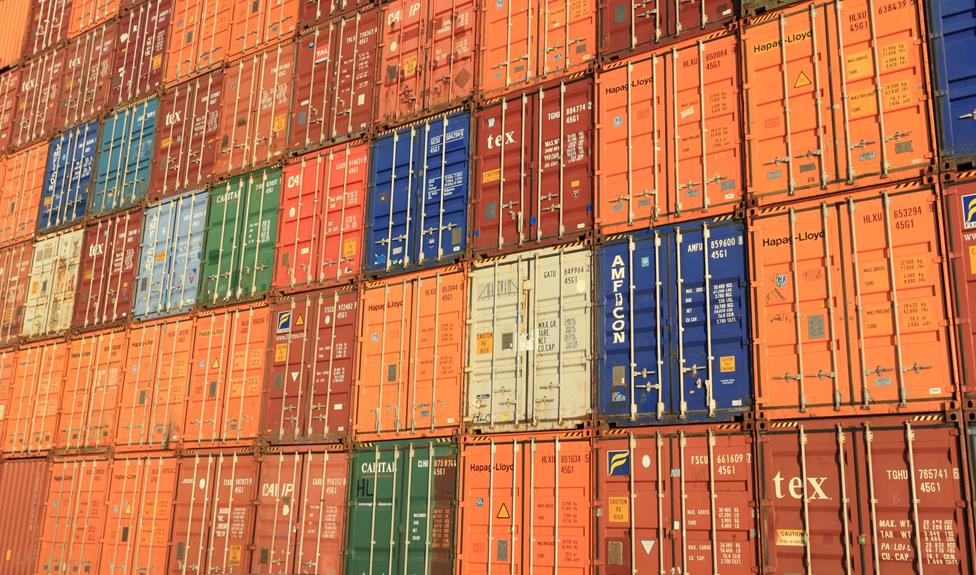You may not realize that cold chain management plays a crucial role in ensuring the safety and quality of perishable goods as they move through the supply chain. From pharmaceuticals to food products, maintaining the integrity of temperature-sensitive items is a complex and essential task.
Understanding the intricacies of cold chain management can unlock numerous advantages for businesses, including cost savings, reduced waste, and enhanced customer satisfaction. As you explore the intricacies of this critical process, you’ll gain valuable insights into the key components, benefits, and future trends shaping the industry, ultimately positioning yourself for success in an increasingly competitive market.
Importance of Cold Chain Management
Understanding the critical importance of cold chain management is essential for ensuring the safety and quality of temperature-sensitive products throughout the supply chain. Maintaining the integrity of the cold chain is crucial in preserving the efficacy of pharmaceuticals, vaccines, and perishable food items. Any deviation from the required temperature range during storage or transport can lead to spoilage, rendering the products ineffective or unsafe for consumption. This can’t only result in financial losses but also pose significant health risks to consumers.
Furthermore, adhering to proper cold chain management practices is imperative for regulatory compliance. Many regulatory bodies have stringent guidelines regarding the storage and transportation of temperature-sensitive products. Failure to comply with these regulations can lead to severe penalties and legal consequences for the parties involved in the handling of these products.
In addition to safety and regulatory considerations, maintaining the cold chain also plays a vital role in preserving the overall quality and efficacy of the products. Proper temperature control can extend the shelf life of perishable items and ensure that pharmaceuticals and vaccines retain their potency until they reach the end-user.
Ultimately, understanding the critical importance of cold chain management is essential for safeguarding the integrity and effectiveness of temperature-sensitive products.
Key Components of Cold Chain
To effectively manage the cold chain, you must ensure the seamless coordination of key components such as temperature monitoring systems, refrigeration units, and insulated packaging.
- Temperature Monitoring Systems: These are crucial for ensuring that the required temperature range is maintained throughout the cold chain process. Advanced monitoring systems provide real-time data and alerts, allowing for immediate action in case of temperature deviations.
- Refrigeration Units: These units are the backbone of the cold chain, responsible for maintaining consistent temperatures during storage and transportation. Proper maintenance and calibration of refrigeration units are essential to prevent temperature fluctuations that can compromise the integrity of the products.
- Insulated Packaging: Insulated packaging plays a vital role in preserving the temperature-sensitive products during transit. It helps to minimize temperature excursions and protect the products from external temperature variations, ensuring their quality and safety upon arrival.
Benefits of Effective Cold Chain
Maintaining an effective cold chain ensures the preservation of product quality and safety throughout the entire supply chain process. By effectively managing temperature-sensitive products, you can significantly reduce the risk of spoilage, contamination, and waste. This directly translates to cost savings for your business. With an efficient cold chain, you can extend the shelf life of your products, reducing the frequency of replenishment and minimizing losses due to expiration. Additionally, ensuring that products remain within the required temperature range helps uphold their quality and integrity, enhancing customer satisfaction and loyalty.
An effective cold chain also enables you to expand your market reach. By maintaining the quality of perishable goods, you can confidently explore new distribution channels, both domestically and internationally. This can lead to increased sales and growth opportunities for your business. Furthermore, it allows you to comply with stringent regulatory requirements, avoiding costly fines and penalties while safeguarding your brand’s reputation.
Ultimately, an effective cold chain management strategy not only protects your products but also unlocks various advantages for your business, from financial savings to market expansion and regulatory compliance.
Regulatory Compliance in Cold Chain
By ensuring that your cold chain operations comply with regulatory requirements, you guarantee the quality and safety of your temperature-sensitive products, thereby safeguarding your business from potential fines and penalties. Regulatory compliance in cold chain management is crucial for maintaining the integrity of your products and upholding consumer trust.
Here’s how you can ensure compliance:
- Temperature Monitoring: Implement real-time temperature monitoring systems to track and record temperature fluctuations throughout the cold chain process. This data is essential for demonstrating compliance with temperature regulations.
- Documentation and Record-Keeping: Maintain accurate and detailed records of temperature logs, transportation conditions, and storage practices. These records serve as evidence of compliance during regulatory inspections.
- Training and Education: Provide comprehensive training to all personnel involved in cold chain operations. Ensure they understand the importance of compliance with regulations and the proper handling of temperature-sensitive products.
Adhering to regulatory requirements not only mitigates the risk of costly penalties but also reinforces the safety and quality of your products, ultimately contributing to the success and reputation of your business.
Optimization Strategies for Cold Chain
Implementing efficient temperature control measures is essential for optimizing the cold chain process and ensuring the integrity of temperature-sensitive products.
To achieve this, consider investing in advanced temperature monitoring technologies. These can provide real-time data, enabling you to proactively address any temperature excursions and prevent product spoilage. Additionally, implementing automated alerts and notifications can help streamline response times to temperature deviations, minimizing the risk of product damage.
Furthermore, optimizing transportation routes and schedules can significantly impact cold chain efficiency. By strategically planning delivery routes and leveraging technology to monitor and adjust schedules in real-time, you can minimize transit times and reduce the likelihood of temperature fluctuations during transport. This approach can lead to improved product quality upon arrival at the destination.
Moreover, consider collaborating with reliable cold chain logistics partners. Choosing providers with a strong track record in temperature-controlled transportation and storage can enhance the overall efficiency and reliability of your cold chain operations. By working closely with experienced partners, you can access valuable expertise and resources to further optimize your cold chain processes.
Future Trends in Cold Chain Management
To stay ahead in cold chain management, it’s crucial to stay updated on emerging technologies and industry best practices. The future of cold chain management is evolving rapidly, and staying informed about the latest trends will be essential for success. Here are three key future trends to keep an eye on:
- Advanced Data Analytics: As technology continues to advance, the use of big data and analytics will play a crucial role in optimizing cold chain operations. From predictive maintenance to real-time monitoring of temperature-sensitive products, leveraging data analytics will enhance efficiency and reduce risks in the cold chain.
- Blockchain Technology: The adoption of blockchain in cold chain management is set to revolutionize transparency and traceability. By providing an immutable ledger of transactions, blockchain can ensure the integrity of temperature-sensitive goods throughout the supply chain, reducing the likelihood of spoilage and increasing consumer trust.
- Sustainable Practices: With a growing emphasis on sustainability, cold chain management is expected to shift towards eco-friendly solutions. This may involve the use of alternative energy sources, such as solar power, and the development of biodegradable packaging materials to minimize environmental impact. Embracing sustainable practices will be a key trend in the future of cold chain management.
Frequently Asked Questions
What Are the Most Common Challenges Faced in Implementing Cold Chain Management in Developing Countries?
In developing countries, common challenges in implementing cold chain management include limited infrastructure, unreliable power supply, and lack of skilled personnel. You’ll need to strategize around these issues to ensure successful implementation and operation.
How Do Advancements in Technology Impact the Future of Cold Chain Management?
Advancements in technology impact the future of cold chain management by enabling real-time monitoring, automated temperature control, and data analytics. You’ll find improved efficiency, better product quality, and reduced waste in your supply chain.
What Are the Potential Environmental Impacts of Cold Chain Management and How Can They Be Mitigated?
To mitigate environmental impacts of cold chain management, you can invest in energy-efficient technologies, optimize transportation routes, and minimize packaging waste. By implementing sustainable practices, you can reduce carbon emissions and preserve natural resources.
How Does Cold Chain Management Differ in the Pharmaceutical Industry Compared to the Food Industry?
In the pharmaceutical industry, cold chain management involves strict temperature control to preserve the efficacy and safety of drugs. This differs from the food industry, where the focus is on maintaining the quality and freshness of perishable goods.
What Role Does Data Analytics and Predictive Modeling Play in Optimizing Cold Chain Management?
Data analytics and predictive modeling play a crucial role in optimizing cold chain management. They help you forecast demand, identify potential risks, and improve overall efficiency. By analyzing data, you can make informed decisions that enhance your cold chain operations.
Conclusion
In conclusion, understanding and effectively managing the cold chain can provide numerous advantages for businesses in terms of product quality, safety, and cost savings.
By optimizing key components, ensuring regulatory compliance, and implementing future-focused strategies, companies can stay ahead in the increasingly competitive market.
It’s clear that cold chain management is a critical aspect of the supply chain that shouldn’t be overlooked.
Stay proactive and informed to unlock the full potential of cold chain management for your business.



